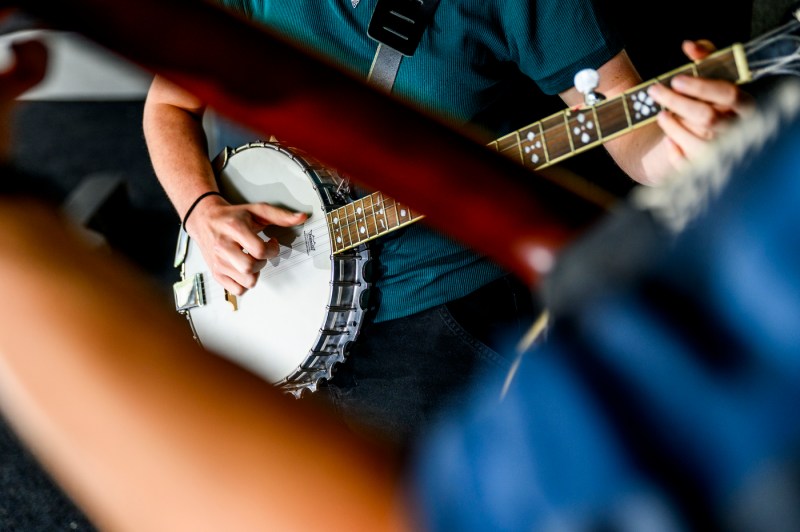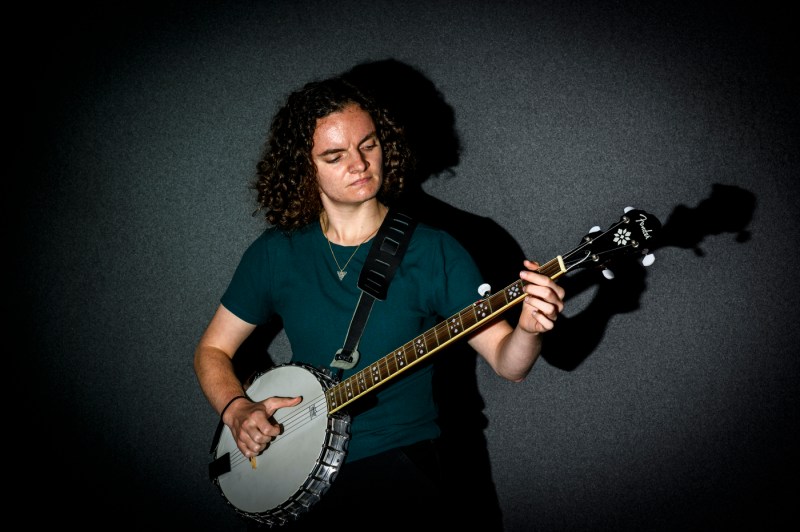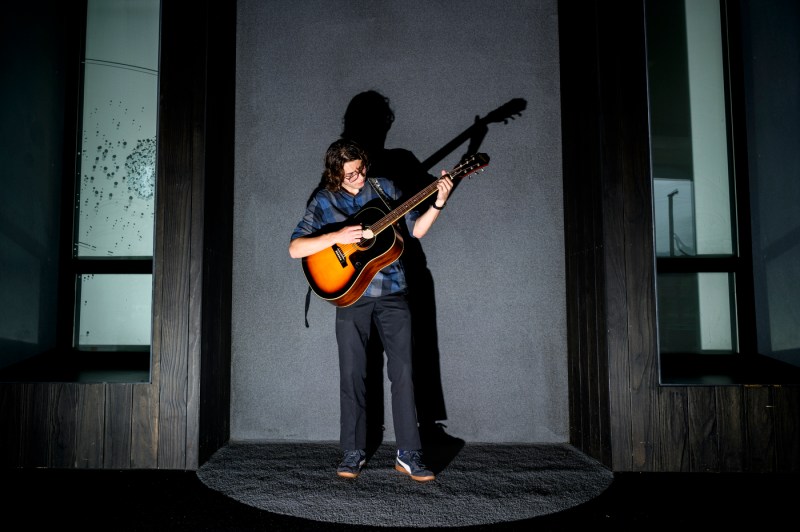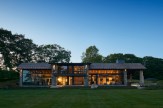The Bluegrass and Fiddle Club just wants to jam
With a focus on traditional bluegrass jams, the Bluegrass and Fiddle Club approaches music unlike any other student organization at Northeastern.

Garrett Compston picks up his guitar and begins to play. What starts as a single plaintive voice is soon answered by a chorus of mandolins, fiddles and other guitars that fill in the space between Compston’s strums.
For some players in this circle of musicians it’s the first time they’ve played this song; others have lost count. For all of them, it’s the best part of their week, a chance to connect with others through song, their bond growing and evolving with the push and pull of the music.
Compston’s jam sessions aren’t just informal gatherings. They are part of Northeastern University’s new Bluegrass and Fiddle Club, which approaches music unlike any other student organization at the university.
Instead of auditions, constant practices and semester-capping musical performances, Compston, the club’s founder, has created a traditional bluegrass jam on Northeastern’s Boston campus. Anyone and everyone is welcome — musicians and non-musicians alike — just as long as they are willing to listen and lean into what makes bluegrass special: It’s produced live, not in deliberate compositions but in the moments that happen organically between musicians.
“If you aren’t really interested in auditioning or in performing or you’re someone who has done a year of an instrument and you aren’t really at a level where you’re like, ‘I’m ready to perform this,’ then there’s not a lot to find here,” says Compston. “I joke — but I also very much believe it — that practice is boring because it is. Doing the fundamentals, they’re necessary and they help a lot, but they’re not fun. It’s a lot more fun to have a reason to go and play with friends.”





Compston, who is studying computer science and music technology at Northeastern, has been playing music since he first picked up the violin at age 11. He started out playing classical music in school orchestras, but his teacher in Medfield, Massachusetts, introduced him to Irish fiddle music.
Although he continued to play in orchestras up through his freshman year at Northeastern, Compston ultimately gravitated toward bluegrass, folk and Irish music, picking up the guitar and mandolin along the way. In Boston, he found a city with a deep bluegrass and folk tradition and countless regular jams.
Compston started attending Cambridge’s Bluegrass Tuesdays, run by musician Tony Watt, and found a community of like-minded players — and inspiration for his own weekly jam.

Editor’s Picks
The basic structure of a bluegrass jam, like the music itself, is simple yet effective. Musicians sit in a circle and cycle through songs from a traditional song catalog. It’s not written down but passed along orally by the leader of the jam, who teaches anyone unfamiliar with a given tune the basic chord progression, key and song structure. It might sound daunting, but Compston says it’s welcoming to beginners and experts alike.
“The aspect of it that makes it very beginner-friendly is when solos start being passed around because the actual chords are typically pretty easy,” Compston says. “So, once a verse-chorus loop has been completed, you’ll start to pass it down the line and people will take solos over that chord progression.”
Compston has taken that idea and adapted it for Northeastern by making it even more inclusive. There’s no pressure to solo or play music at all on any given night.
“Usually when I go, he has these egg shakers, so I shake the eggs,” says Katherine Buffinger, a cell and molecular biology student. “Garrett’s a very ‘meet you where you are’ person, so whatever you bring in that Wednesday night — if you had a good day, if you had a bad day — it’s OK. It’ll figure itself out.”

Buffinger has been friends with Compston since before they came to Northeastern, and despite her admission that she’s “not that musically talented,” she has been coming to the jams since the very beginning.
“It’s different every time and there’s different players, so that’s cool to see how everybody melds together,” Buffinger says. “It’s just a very open, creative space to be in.”
In that way, music is just a medium for the real goal of the Bluegrass and Fiddle Club: connection. Entering a bluegrass jam is a lesson in one of the most important skills someone can learn, in and out of music: communication.
“This kind of setting, there is a case where there is the person ‘leading’ the jam, but just as much of it is decided by the group,” Compston says. “If someone’s going a little bit fast, they will need to listen a little bit more and rein themselves into the group. Or sometimes the opposite happens and the group speeds up.”










